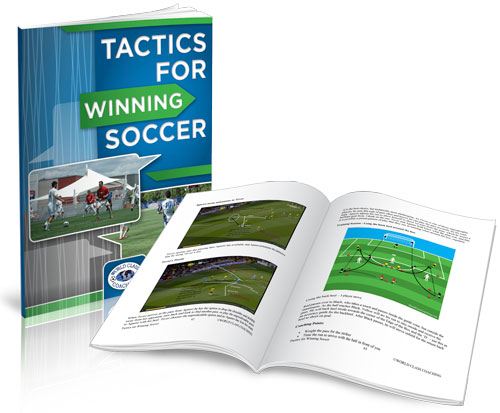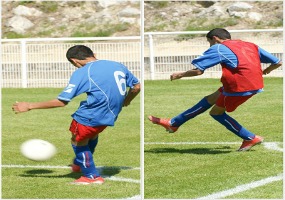

Disguise strategies reduce the detectability of critical cues. These strategies are broadly categorised as disguise or deception. Ĭompetitive players also need to develop strategies to prevent their own actions from being anticipated. Furthermore, experiments within a range of interceptive sports, using video clips curtailed prior to critical events, consistently show better detection by experts of predictive information,.

Related studies have isolated which specific kinematic cues are predictive of the outcome of an action in sport, for example, the direction of a tennis serve. The importance, in interceptive sports, of body kinematics as a cue to future action, has been established in studies using point-light displays. Soccer players will benefit from being able to correctly predict the actions of their opponents because anticipation increases the time available for events such as intercepting a pass, blocking a shot at goal, or making a tackle. Soccer is an example of an open-skill sport, that is, one where the environment and therefore the task at hand is constantly changing because of the actions of other players.

This paper will examine how such deceptive moves produce their effects, and why even experienced players may be fooled by them. In recent decades, a number of international soccer players have become renowned for their skill in performing these moves, and awareness and appreciation of the step-over and its variants has increased amongst players, coaches and fans. Acting on the basis of advance information, the presence of deceptive moves primes responses in the wrong direction, which may be only partly mitigated by delaying a response until veridical cues emerge.Ī soccer player making a run with the ball will often execute a deceptive move known as a step-over in order to evade a defender. A deceptive move is designed to turn this cueing advantage into a disadvantage. This could create a reaction time advantage when anticipating the direction of a normal move. It is concluded that the body kinematics of soccer players generate spatial cueing effects when viewed from an opponent's perspective. The reversed cueing by deceptive moves coincided with earlier kinematic events than cueing by normal moves. HS and LS groups showed faster reaction times to targets that were congruent with the direction of normal turns, and to targets incongruent with the direction of deceptive turns. In experiment 2, point-light clips were used to cue a lateral target. For deceptive moves, LS participants were significantly worse than chance and HS participants were somewhat more accurate but nevertheless substantially impaired. Both HS and LS groups correctly identified direction on normal moves at all occlusion levels.
#Advanced soccer moves full
In experiment 1, accuracy on full video clips was higher than on point-light but results followed the same overall pattern. Participants were divided into higher-skilled (HS) and lower-skilled (LS) groups according to soccer experience. Clips were curtailed before or on the turn (−160, −80, 0 or +80 ms) to examine the time course of direction prediction and spatial cueing effects. Stimuli comprised normal resolution or point-light video clips of soccer players dribbling a football towards the observer then turning right or left with the ball. The purpose of the experiments was to analyse the spatial cueing effects of the movements of soccer players executing normal and deceptive (step-over) turns with the ball.


 0 kommentar(er)
0 kommentar(er)
